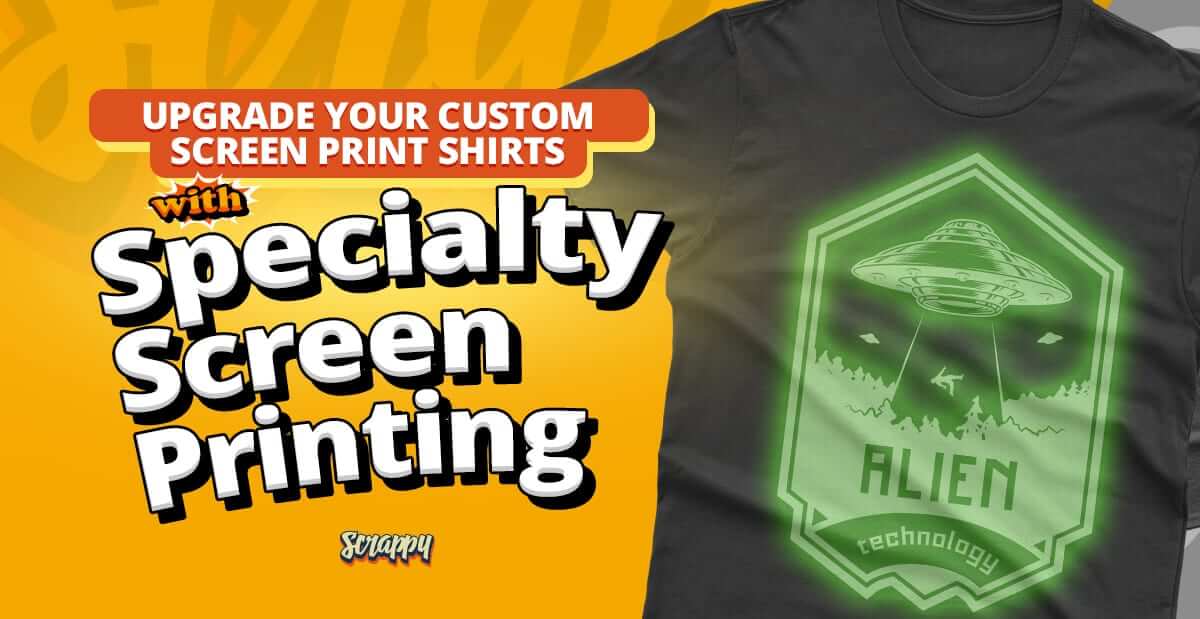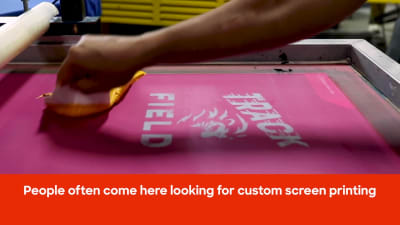Affordable Screen Printing Kit for Home Use
Wiki Article
Display Printing Uncovered: Everything You Required to Find Out About T-Shirt and Garment Printing Methods
Screen printing is a fascinating technique that integrates art with method, supplying unlimited opportunities for creativity. Ready to explore the vital aspects that make screen printing an art form?
The Essentials of Display Printing: How It Works
When you dive right into display printing, you'll find it's both an art and a science. At its core, display printing involves developing a pattern, or screen, that permits ink to pass with only in particular areas (screen printing kit). You begin by selecting your style and preparing your screen with a light-sensitive emulsion. Once you expose this solution to light, it solidifies, leaving your style as an unfavorable area.Following, you'll mix your inks and prepare your printing surface area. Setting the display over the fabric, after that use a squeegee to press ink through the screen onto the garment. This procedure requires accuracy, as you desire clear, dynamic prints. After printing, you'll heal the ink with heat, ensuring it follows the material and lasts via washes. Each action is crucial, and understanding them will elevate your screen printing abilities, changing simple garments right into special, meaningful items.
Sorts Of Screen Printing Methods
When you comprehend the fundamentals of screen printing, it's time to check out the different methods that can raise your styles. One prominent technique is typical display printing, where ink is pressed via a stenciled screen.If you're aiming for fine information, take into consideration discharge printing. This technique eliminates dye from the textile, leaving a soft, classic appearance. An additional choice is plastisol printing, understood for its longevity and dazzling colors, making it a favorite for many brand names. Experiment with halftone printing to produce gradient results and detailed styles. Each method has its special beauty, so do not think twice to try them bent on discover what suits your design best!
Essential Tools for Screen Printing
To achieve magnificent results in display printing, having the right equipment is fundamental. You'll need a tough screen printing frame, which holds the mesh that transfers your design onto the garment. Next, spend in top quality squeegees; these are crucial for using ink evenly across the screen.Choosing the Right Inks and Materials
When selecting inks and products for display printing, you need to take into consideration the kind of ink that functions finest for your job. Believe regarding material compatibility to assure your styles look last and great long. Discover green ink choices to make your printing procedure much more lasting.Types of Screen Inks
Choosing the right display ink is crucial for attaining dynamic, resilient prints that fulfill your task's requirements. There are several kinds of display inks to check out. Plastisol ink is prominent for its adaptability and convenience of usage, providing outstanding color opacity on dark textiles. Water-based ink, on the various other hand, uses a softer feel and is environmentally friendly, making it perfect for those wanting to minimize their ecological impact. Release inks eliminate dye from the textile, leading to a soft, vintage appearance however require details handling. Ultimately, specialized inks, such as glow-in-the-dark or metal, can include distinct impacts to your styles. Evaluate your task needs and choose the ink that lines up ideal with your preferred outcome.
Material Compatibility Factors To Consider
Recognizing fabric compatibility is important for accomplishing top quality display prints, specifically because various materials respond distinctively to numerous inks. Always examine your inks on sample textile to guarantee they stick properly and preserve shade integrity. In addition, keep in mind that material weight and texture can influence the final result, so selecting the best ink and product combo is essential for your project's success.Eco-Friendly Ink Options
Green inks are becoming a prominent option for screen printers who desire to minimize their ecological impact while preserving top quality. When picking inks, consider water-based inks, which are much less damaging and simpler to cleanse up compared to traditional solvents.Furthermore, seek inks made from renewable energies, such as soy or vegetable-based alternatives. By selecting the right inks and materials, you'll not just produce sensational styles but also add to an extra lasting printing procedure. Make the button, and your prints will show your commitment to the environment!
Preparing Your Design for Screen Printing

File Format Requirements
To assure your layout looks vibrant and sharp on fabric, you'll require to pay close focus to submit style requirements for display printing. Beginning with vector documents like AI or EPS, as they can be scaled without losing quality. If you make use of raster images, go with high-resolution documents, such as TIFF or PNG, preferably at 300 DPI. Prevent making use of JPEGs, as they can lose clarity when resized. Make certain your design has a transparent history to prevent undesirable white sides on your prints. Lastly, keep color settings in mind; CMYK is basic for screen printing, so Related Site convert your RGB makes as necessary. By adhering to these guidelines, you'll establish your artwork up for an effective print.Color Splitting Up Strategies
Shade separation is an important action in preparing your layout for display printing, and understanding it can substantially enhance your print top quality. You'll need to damage your design into private shades, as each color requires a separate display during printing. Beginning by recognizing all the shades in your design and create layers for each one. You can use software application like Adobe Photoshop or Illustrator to isolate and separate shades efficiently. Be specific to conserve each layer as a different data, generally in a style like TIFF or PSD. This accuracy not just ensures exact shade depiction but also streamlines the printing procedure. By taking note of color separation, you'll achieve dynamic and professional lead to your screen-printed garments.Resolution and Size
Accomplishing the very best cause screen printing starts with assuring your design has the ideal resolution and dimension. Ideally, your art work ought to be at least 300 DPI (dots per inch) for sharp, clear prints. Your last item might look unprofessional and pixelated. if you use lower resolution.When it comes to size, consider the measurements of your print location. Design your artwork to match the last print dimension, ideally creating it in the real dimensions you'll be publishing. This method, you'll prevent any kind of unforeseen scaling issues.
Always examine your layout in both vector and raster formats. Vector graphics can be scaled without losing top quality, making them suitable for screen printing. Preparing appropriately will guarantee your design looks incredible on every garment!
Step-by-Step Screen Printing Process
Screen printing is a dynamic process that allows you to produce lively layouts on various surfaces. To get begun, you'll require a screen, emulsion, and your chosen ink.After cleaning out the unexposed solution, your display prepares. Set it up on your printing surface and align your garment under it. Pour ink onto the display and use a squeegee to push the ink via the stencil onto the material. Raise the screen thoroughly and let the print completely dry. Heal the ink using warm to assure sturdiness. That's it! You've efficiently screen published your layout.
Tips for Effective Display Printing Projects
While you're diving into your screen printing tasks, bear in mind that preparation is essential to success. Begin by collecting all your materials-- inks, mops, garments, and screens. A clean work space aids stop undesirable errors, so clean up before you start.Next, verify your art work is high-resolution and appropriately sized for your garment. Check your screen for appropriate exposure and clean it extensively to prevent smudges. When blending your inks, follow the producer's guidelines to attain the ideal consistency.
During printing, apply check here also stress with your squeegee for constant results. Don't hurry; take your time to validate each print satisfies your requirements. After printing, allow your garments dry totally before managing or packaging them.
Last but not least, always maintain a sample of your work for future referral. In this manner, you can examine your progression and improve your methods with time. Delighted printing!

Regularly Asked Concerns
How much time Does It Take to Establish a Screen Printing Task?
Establishing up a screen printing job commonly takes about half an hour to an hour. You'll prepare the screens, mix inks, and adjust the press. The time differs based upon intricacy and experience, so stay organized!Can I Publish on Various Material Types Using the Same Strategy?
Yes, you can publish on various fabric types making use of the exact same method, but you'll need to readjust your setups and inks. Some fabrics absorb ink differently, so exploring guarantees the very best results for each product.What Are Common Mistakes to Stay Clear Of in Display Printing?
When display printing, stay clear of usual mistakes like making use of the incorrect ink, overlooking check here appropriate direct exposure times, or missing pre-press checks. Constantly examine your arrangement and keep clean displays to assure quality results each time.Exactly How Can I Appropriately Tidy and Keep My Display Printing Devices?
To properly clean and preserve your screen printing devices, you must on a regular basis clean screens with suitable solvents, check mops for wear, and ensure all tools are saved dust-free and completely dry. Consistency improves and avoids pricey repairs efficiency.Is Screen Printing Eco Friendly Contrasted to Various Other Approaches?
Screen printing can be much more eco-friendly than various other techniques, especially if you make use of water-based inks and eco-conscious materials. By picking lasting supplies and techniques, you decrease waste and lessen your influence on the planet.Screen Printing Uncovered: Everything You Required to Know Concerning T-Shirt and Garment Printing Methods
At its core, screen printing includes developing a pattern, or screen, that allows ink to pass with just in specific areas. Setting the display over the material, after that make use of a squeegee to push ink through the screen onto the garment. One prominent technique is standard display printing, where ink is pushed through a stenciled screen.When choosing inks and materials for screen printing, you need to take into account the type of ink that works finest for your job.
Report this wiki page